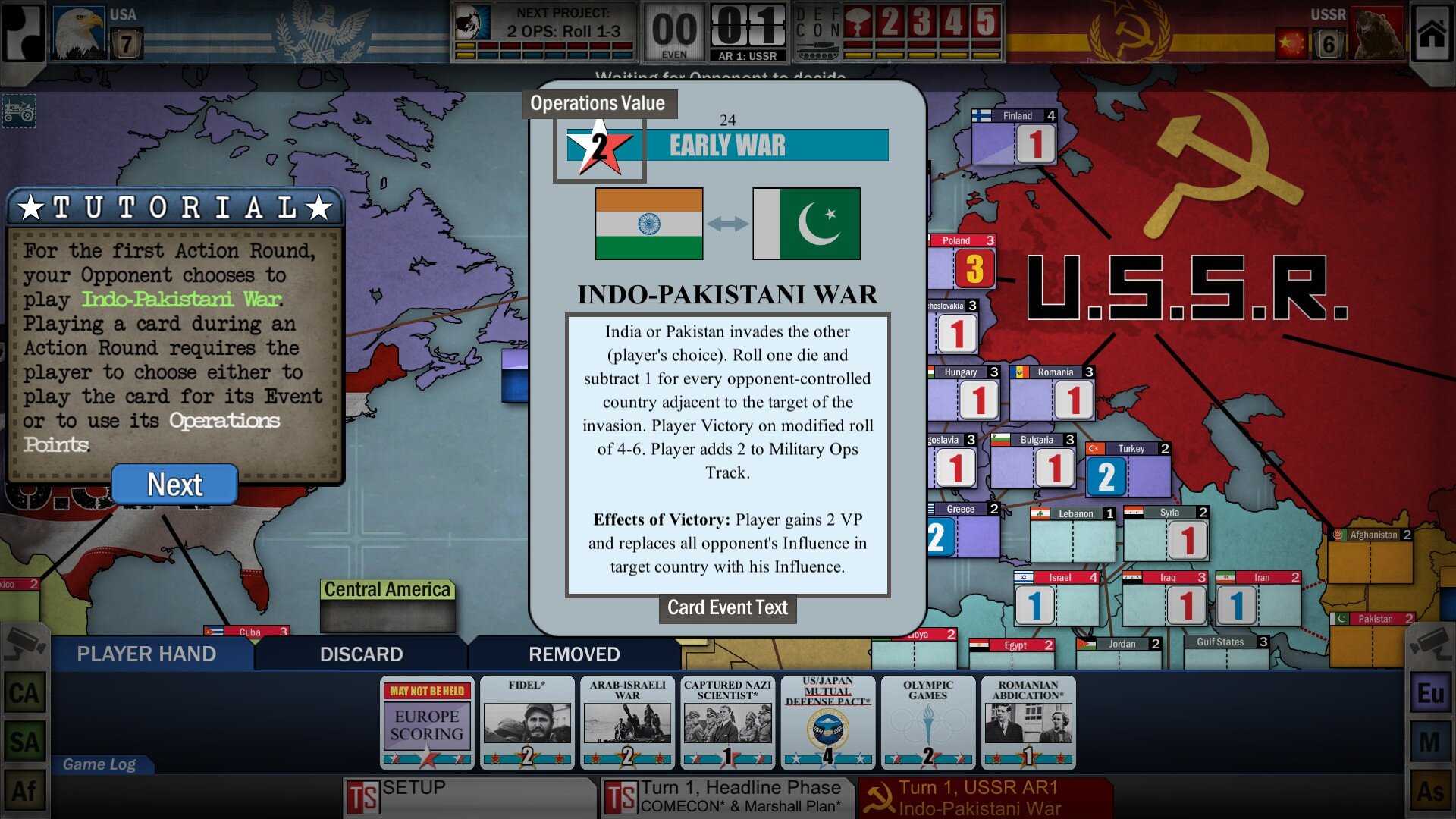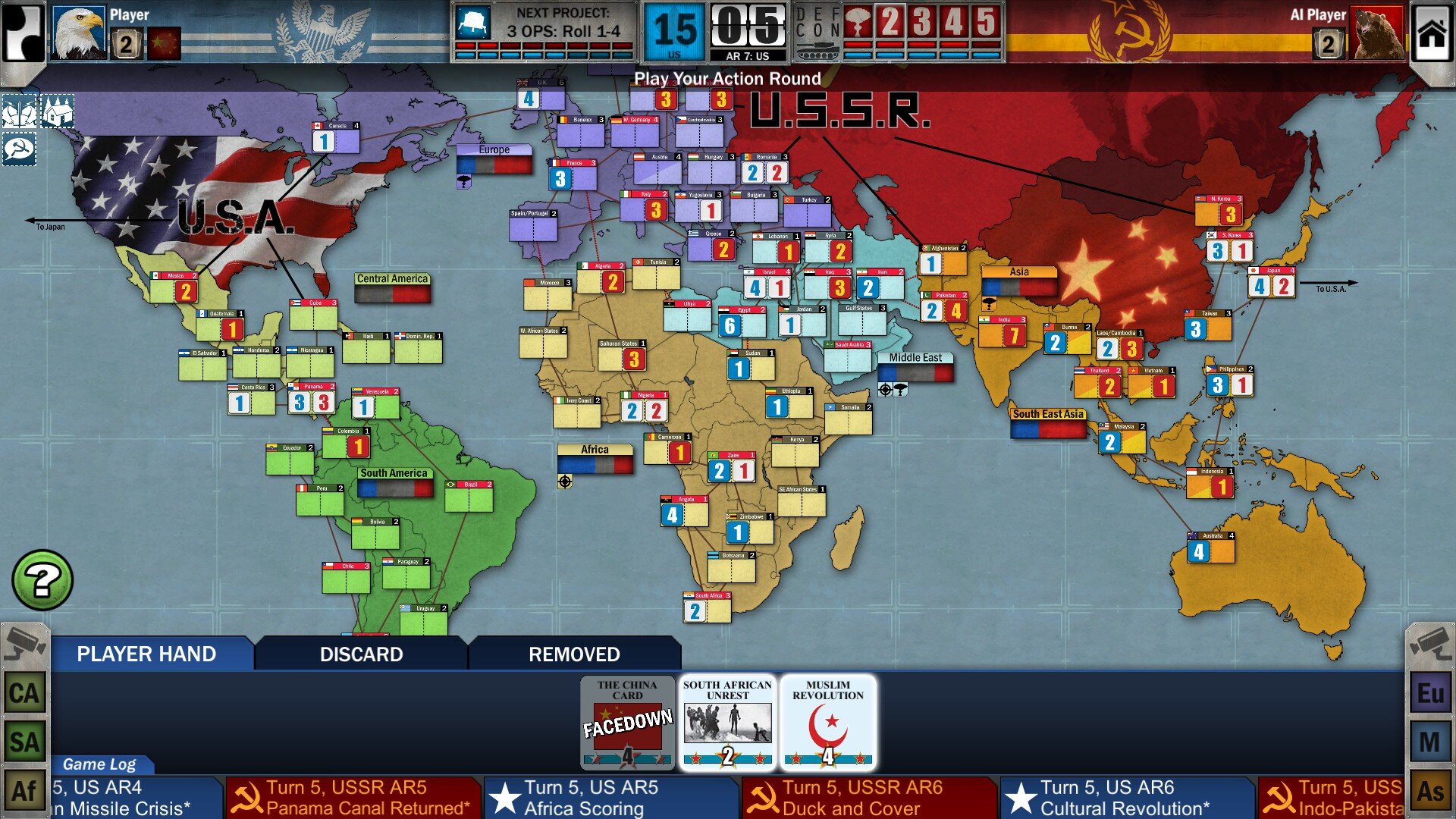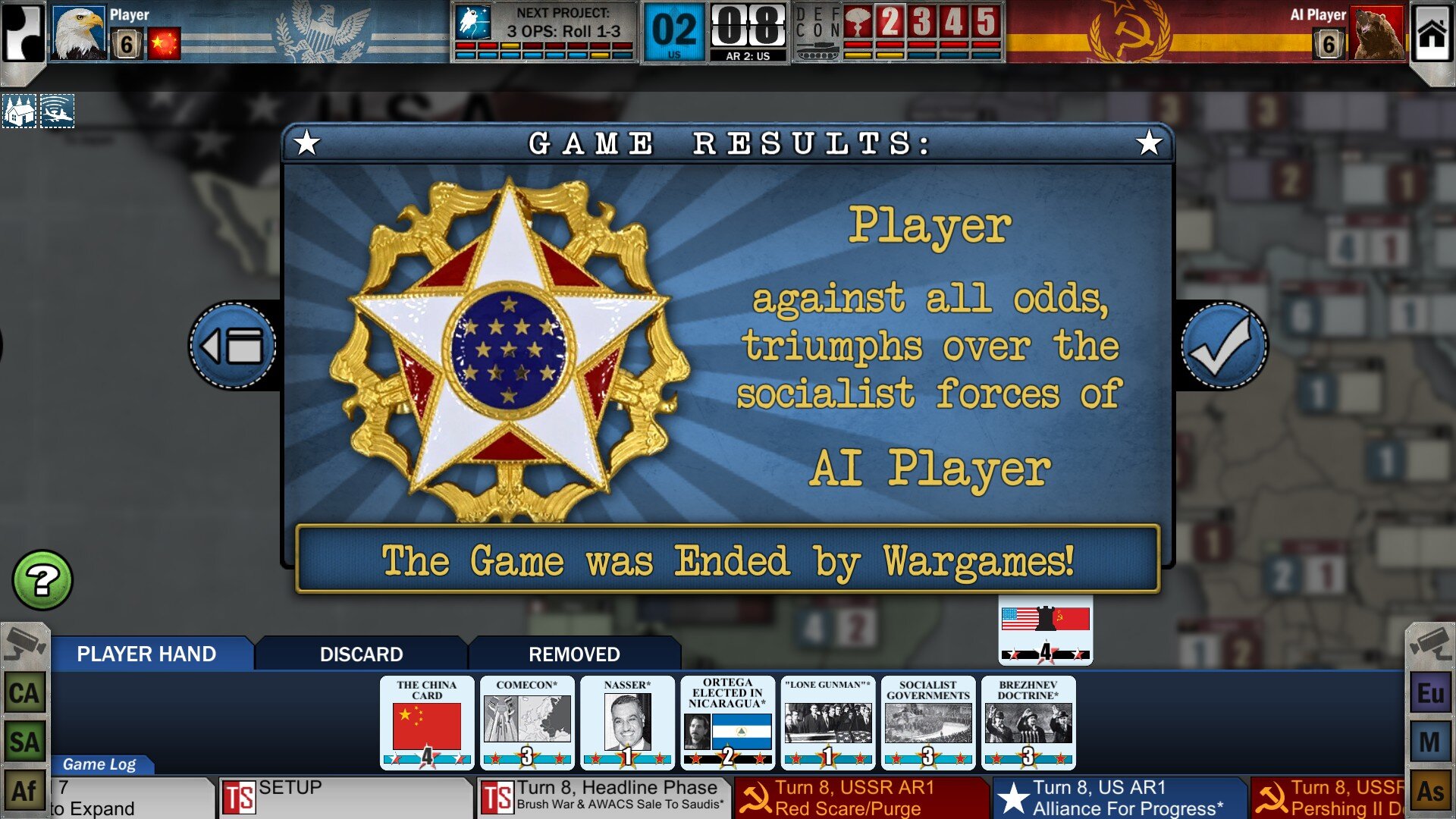I have to admit I’m a bit unsure about this review; Twilight Struggle is a board game released in 2005 based around the cold war, but I’ve never played that game. On the other hand, I found this computer version quite difficult to understand and even if after a while I kinda got into it, I’m a bit perplexed how to go about it. Would it be fair for me to review the board game part of this steam product? Should I only review the ‘videogame’ part? Is that even possible? If I were to review Monopoly on the Wii, do I only talk about wiimote actions or do I go about explaining what I like and don’t like about Monopoly itself? I think I’ll talk about the board game ‘Twilight Struggle’ but also the video game. It’s not bad! Not my cup of tea (I’m not a fan of competitive games) but a real neat one regardless!
The core concept of TS is to win the cold war by gathering 20 Victory Points, or go 10 rounds and get the highest VP score. Each round is made of playing 8 cards. Cards do a lot of different things in TS, maybe too much. Each round starts with a ‘headline’ phase where players play cards for their events. I’m not sure what makes headline phase special and the tutorial didn’t help much. Cards have an ‘Operation Value’ that you can use to Place Influence, Attempt A Coup, Attempt Realignment or try at the Space Race. They also have events that are aligned with the US or USSR, the thing in Twilight Struggle is that the cards in your hands might be helpful for your enemy, and when you use them for anything except the Space Race, the event on them HAS to play.
I’ll have to admit, I have no idea how you could play TS in real life. Some rules seem pretty complicated, even when the computer automates them for you. Calculating your odds of winning when attempting coups (military actions that has you try to gain influence in countries by rolling dice) or realignment works with many factors, like how many adjacent countries your opponent controls, idem for ‘score cards’ (special cards that give a lot of VP depending on how many countries you occupy and control in a given territory) which involve crunching a few numbers. These special cards ‘need’ to be played if you have them, or else you lose the game, how does that work in the real game? Do they have a special mark on their back so your opponent knows you have it? Doesn’t that reveal that you’re going to play a score card?
There are also a few other side rules, like the DEFCON track (if it goes to 1, the player who lowered it loses), the space race (that allows you to trash one card to roll a dice and attempt a specific score which gives a few bonuses), military operations and a bunch of effects and card abilities that stay for some time. It’s pretty stressful to try and figure out your best move, especially when all the cards in your hand are beneficial for your adversary. It’s also tough to know where to expend, what to spend your influence on, where good coups are. If you get a scoring card, you’re set for the round, but between these moments? I never really was sure. The computer AI sure loved to put influence everywhere while I played events and went about with the space race.
Ultimately I won my only game of Twilight Struggle by the skin of my teeth even if I had given myself a +10 influence handicap. I thought I could win by getting to 20 VP but some opponent move prevented me to do so. I finally won by playing ‘War Games’, a weird card that gives 6 VP to your enemy but immediately ends the match. Weird! Twilight Struggle seems like a perfectly good game for Cold War aficionados, or people who wished RISK was more ground in reality. It’s also a neat 1v1 board game, if that’s your kind of thing! It’s probably better against another real human than against the computer.

















